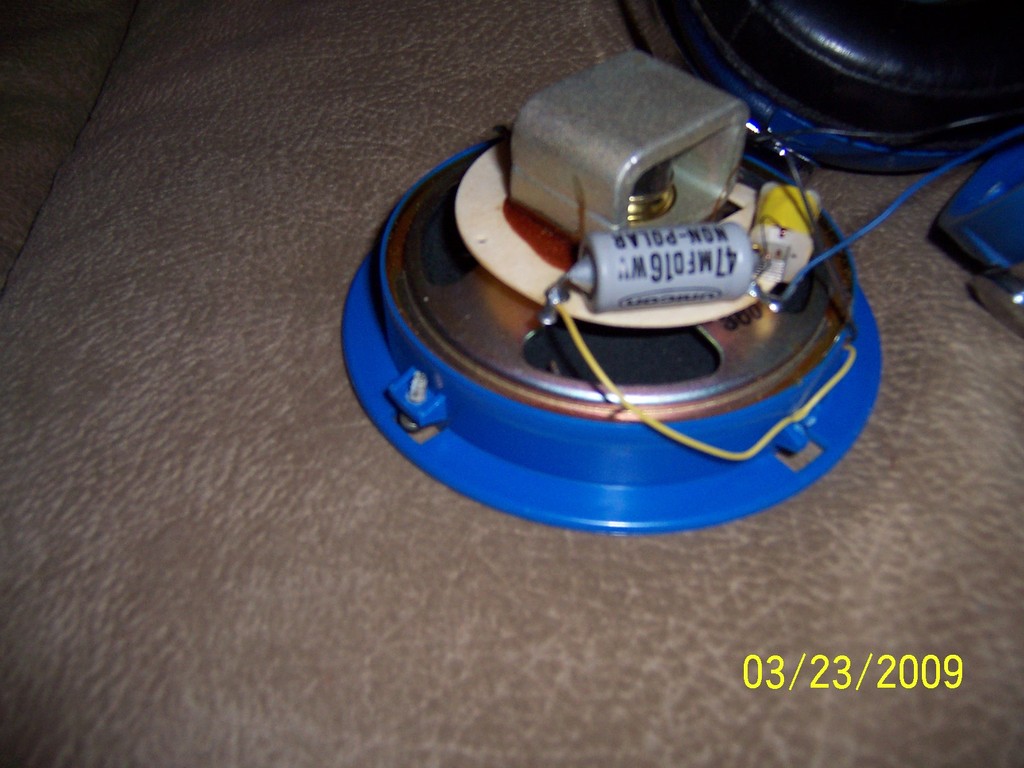First post, by Jade Falcon
So I have a set old Stanton Dynaphase 60's and I need to change the crossover caps
I was wondering if changed the UF rating how would it affect sound? I never really played with changing out crossovers other then exact replacements.
This is a photo of the inside of one of the cans.
